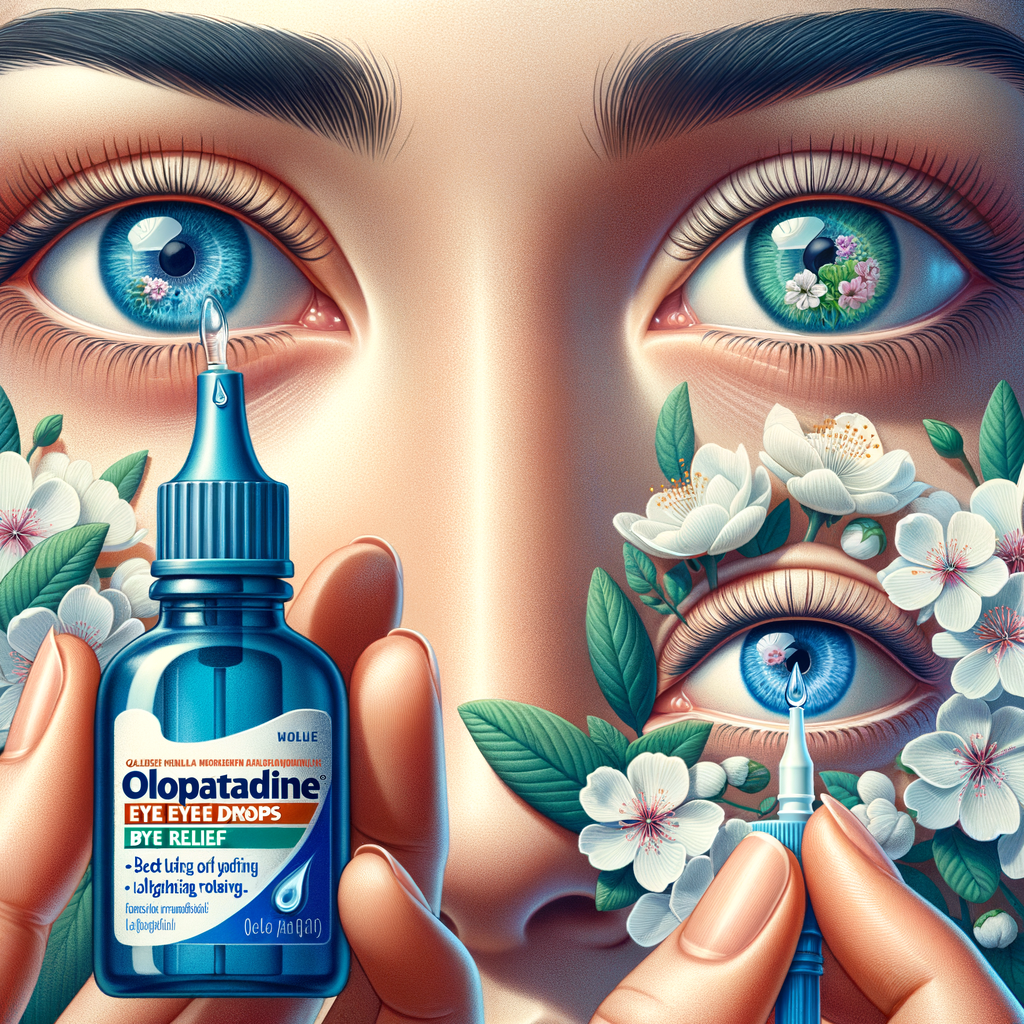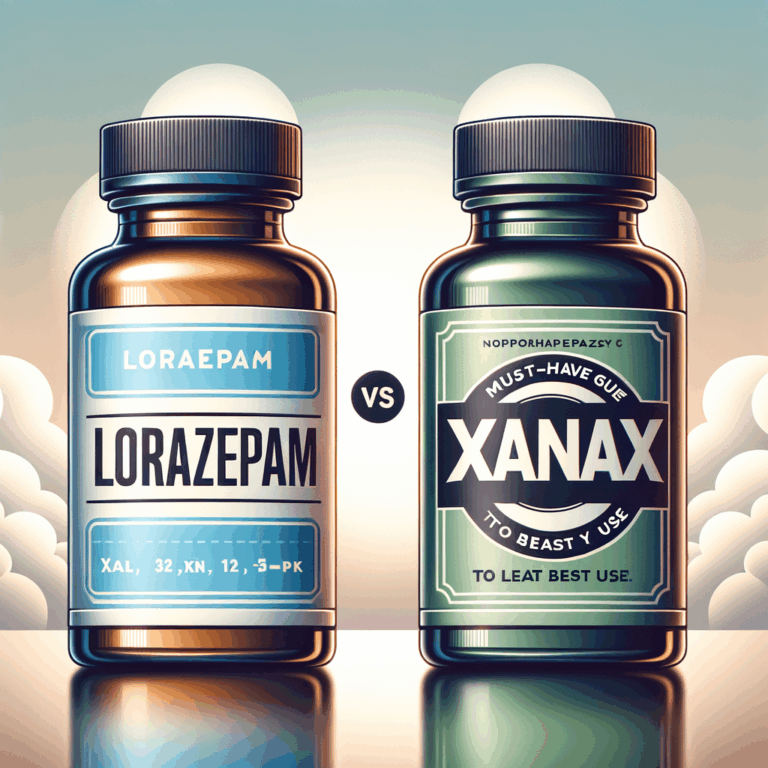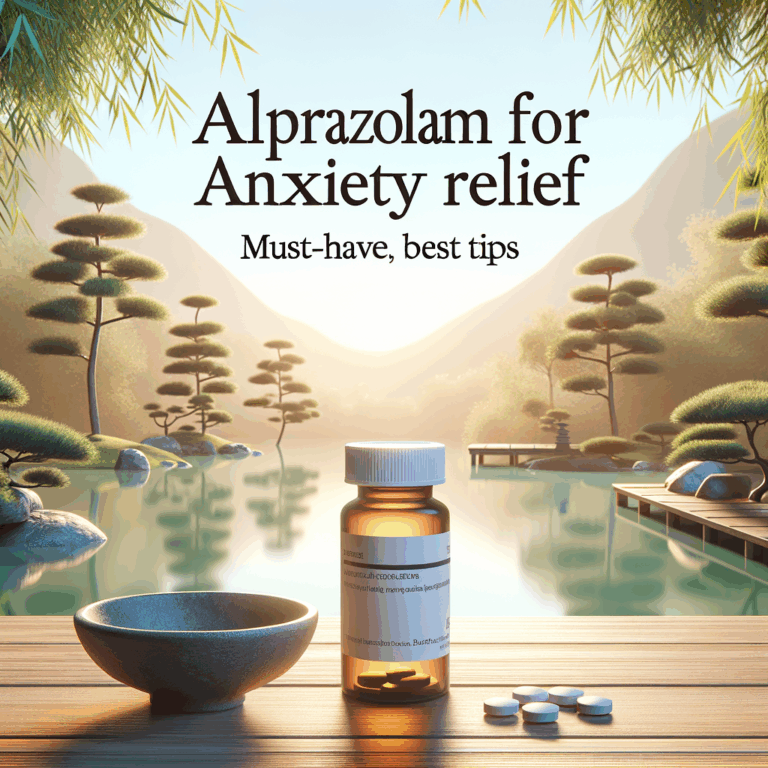
- Introduction
- What Is Olopatadine?
- How Olopatadine Eye Drops for Allergies Work
- Key Benefits of Olopatadine Eye Drops
- Common Formulations and Brand Names
- Quick comparison table
- Who Should Use Olopatadine Eye Drops?
- How to Use Olopatadine Eye Drops Correctly
- Tips for easier application
- Dosing Recommendations and Schedules
- Safety and Side Effects
- Who should avoid olopatadine?
- Interactions with Other Eye Medications
- Comparing Olopatadine to Other Allergy Eye Drops
- Comparison table: Olopatadine vs. common alternatives
- Special Considerations: Children and Pregnancy
- Managing Side Effects and When to Stop
- Frequently Asked Practical Questions
- Storage and expiration
- Using drops with contact lenses
- How to Choose the Best Olopatadine Eye Drops for Allergies
- Tips for Allergy Season: Combine Treatments Wisely
- When to See a Doctor or Eye Specialist
- Cost and Insurance Coverage
- Common Myths and Misconceptions
- Real-World User Experiences
- Environmental and Lifestyle Tips to Maximize Relief
- Step-by-Step: What to Do During an Allergy Flare
- Regulatory Status and Availability
- Frequently Asked Questions (FAQs)
- Summary and Final Recommendations
- References
Introduction
Allergic eye symptoms can ruin your day. They make your eyes itch, water, and look red. Fortunately, Olopatadine Eye Drops for Allergies offer targeted relief. These drops reduce itching and redness quickly. They work well for seasonal and year-round allergies.
In this article, you will get a practical guide. I explain how olopatadine works, how to use it, and what to expect. Also, I compare it to other options. Finally, I cover safety, side effects, and buying tips. Read on to find out if olopatadine drops are your best, must-have relief.
What Is Olopatadine?
Olopatadine is an antihistamine and mast cell stabilizer. It blocks histamine receptors that cause allergic symptoms. Also, it prevents the release of inflammatory chemicals from mast cells. As a result, it treats both immediate and delayed allergic reactions in the eye.
Manufacturers sell it as eye drops for topical use. You can find it in prescription and over-the-counter forms. The formulations vary in concentration and preservatives. Yet they all aim to reduce itching, redness, and tearing.
How Olopatadine Eye Drops for Allergies Work
Olopatadine binds to H1 histamine receptors in the eye. Consequently, it blocks histamine’s effects. That action reduces itching and redness rapidly. Meanwhile, its mast cell stabilization limits future allergic responses.
When you apply the drops, they act locally. They target the conjunctiva and surrounding tissues. Thus, you get relief with fewer systemic effects. In short, olopatadine addresses both symptoms and underlying triggers.
Key Benefits of Olopatadine Eye Drops
Olopatadine Eye Drops for Allergies deliver several strong benefits. First, they relieve itching within minutes. Many users notice improvement quickly. Second, they reduce redness and tearing effectively.
Third, they work for seasonal and perennial allergies. Fourth, they tend to cause fewer systemic side effects. You can use them alongside oral antihistamines if needed. Finally, they come in convenient dosing schedules. Once or twice daily use improves compliance.
Common Formulations and Brand Names
Olopatadine comes in different strengths. Typical concentrations include 0.1%, 0.2%, and 0.7%. Each concentration suits different needs. For example, 0.7% allows once-daily dosing. Lower strengths may require twice-daily use.
Popular brand names include Patanol, Pataday, and Pazeo. Generic versions also exist. Moreover, some bottles use preservatives while others are preservative-free. Preservative-free options reduce irritation for sensitive eyes.
Quick comparison table
| Brand/Generic | Concentration | Dosing | Notes |
|---|---|---|---|
| Patanol | 0.1% | Twice daily | Prescription; widely used |
| Pataday | 0.2% / 0.7% | Once or twice daily | OTC in many countries |
| Pazeo | 0.7% | Once daily | Higher potency for persistent symptoms |
| Generic Olopatadine | Varies | Varies | More affordable |
Who Should Use Olopatadine Eye Drops?
People with allergic conjunctivitis benefit most. If your eyes itch or water in certain seasons, try olopatadine. Also, those with indoor allergies can see relief. Parents use it safely for many children under guidance.
However, talk to a healthcare provider if you have eye infections. Similarly, check with your doctor if you wear contact lenses. In some cases, you must remove lenses before application.
How to Use Olopatadine Eye Drops Correctly
Clean your hands thoroughly before applying drops. Shake the bottle if the label instructs. Tilt your head back and pull down the lower eyelid. Instill one drop into the pocket formed by the eyelid.
Close your eyes for one to two minutes after application. Press the inner corner of the eye gently to limit drainage. If you need more than one drop, wait five minutes between doses. Also, remove contact lenses unless the product says otherwise.
Tips for easier application
– Store the drops at the recommended temperature.
– Warm the bottle briefly in your hands to reduce stinging.
– Use a mirror if you have trouble aiming the drop.
– Have someone help you if you struggle to apply drops.
Dosing Recommendations and Schedules
Follow the product label or your doctor’s instructions. Most formulations work once or twice daily. For example, olopatadine 0.7% usually requires once-daily use. Meanwhile, 0.1% might need twice-daily dosing.
Do not exceed the recommended amount. More frequent use won’t improve results quickly. Instead, it may increase irritation. If symptoms persist after a week, consult your healthcare provider.
Safety and Side Effects
Olopatadine is generally safe for short-term use. Still, some people experience mild side effects. Common issues include burning, stinging, and dry eyes. These effects often resolve quickly.
Less commonly, people report blurred vision, headache, or taste disturbance. Also, rare allergic reactions can occur. Stop use and seek help if you develop severe eye pain, vision changes, or swelling. Pregnant or breastfeeding women should discuss use with a provider.
Who should avoid olopatadine?
– People with known hypersensitivity to olopatadine.
– Those with active eye infections, unless advised otherwise.
– Patients with unexplained eye pain or vision loss should see a specialist first.
Interactions with Other Eye Medications
Olopatadine rarely interacts with systemic drugs. Yet it can interact with other topical eye treatments. If you use multiple eye drops, separate them by five minutes. First, use suspension or aqueous drops, then ointments last.
Also, avoid using contact lenses immediately after drops. Some formulations contain preservatives that may absorb into soft lenses. If you use steroid eye drops or glaucoma medications, tell your doctor. They will advise the correct order and timing.
Comparing Olopatadine to Other Allergy Eye Drops
Several eye drops treat allergic conjunctivitis. These include ketotifen, azelastine, and steroid drops. Olopatadine compares favorably in efficacy and safety. It often provides faster itch relief than older antihistamines.
Compared to steroids, olopatadine avoids steroid-related risks. Steroids can raise eye pressure with prolonged use. Yet steroids remain useful for severe inflammation. In that case, doctors often combine treatments under supervision.
Comparison table: Olopatadine vs. common alternatives
| Feature | Olopatadine | Ketotifen | Steroid drops |
|---|---|---|---|
| Speed of itch relief | Fast | Fast | Moderate |
| Frequency | Once/twice daily | Twice daily | Variable |
| Long-term safety | Good | Good | Concerns with prolonged use |
| OTC availability | Yes in many countries | Yes | Prescription |
Special Considerations: Children and Pregnancy
Pediatric use depends on the formulation and age. Some olopatadine drops have pediatric approval. Still, you must follow the dosing guidelines for children. Speak with a pediatrician before starting treatment.
Pregnant or breastfeeding women should consult their care provider. Clinical data on safety in pregnancy remain limited. Therefore, weigh the benefits against potential risks. Your provider will guide a safe plan.
Managing Side Effects and When to Stop
If you get mild stinging, try warming the bottle first. Also, blink a few times after application to spread the drop. Yet if irritation persists, stop use and consult a provider.
Stop using olopatadine immediately for signs of severe reaction. These include eye pain, severe redness, worsening vision, or swelling. Seek urgent medical attention in that case. Your doctor will recommend alternative treatments.
Frequently Asked Practical Questions
Below are practical tips many people ask about. First, store the drops as directed. Avoid extreme heat. Next, track your symptom pattern to know if allergies trigger them. Also, keep a spare bottle for peak allergy seasons. Finally, carry your drops when traveling.
Storage and expiration
Store unopened bottles at room temperature unless instructed otherwise. After opening, follow the label for allowable use period. Discard any drops beyond the recommended time. Old drops can harbor bacteria and cause infections.
Using drops with contact lenses
Remove soft contact lenses before applying most olopatadine drops. Wait at least 10 to 15 minutes before reinserting them. Some preservative-free formulas may allow contact lens use. Still, check the product label first.
How to Choose the Best Olopatadine Eye Drops for Allergies
Start by checking concentration and dosing convenience. If you dislike frequent dosing, opt for 0.7% once-daily options. Next, consider preservative-free bottles for sensitive eyes. Also, check whether the formulation is OTC or prescription-only.
Price matters too. Generics usually cost less. Moreover, consult your pharmacist or doctor about available brands. They can recommend a choice that matches symptoms and budget.
Tips for Allergy Season: Combine Treatments Wisely
Use olopatadine as part of an allergy plan. Combine it with environmental controls and oral antihistamines if needed. For example, keep windows closed during high pollen times. Also, wash your face and rinse your eyes after outdoor exposure.
If symptoms persist, consult an allergist. Allergy testing can identify specific triggers. Then you can target those triggers or consider immunotherapy. Meanwhile, olopatadine can reduce daily symptoms effectively.
When to See a Doctor or Eye Specialist
Seek medical advice for severe symptoms. These include intense pain, sudden vision loss, or discharge suggesting infection. Also, see a doctor if symptoms do not improve after a week of correct use.
If you have chronic eye issues or underlying eye conditions, schedule an exam. Your doctor may recommend additional tests or prescription treatments. They might also refer you to an ophthalmologist.
Cost and Insurance Coverage
Coverage depends on your plan and location. OTC formulations may not qualify for prescription benefits. Yet prescription-strength options might be covered. Ask your insurer or pharmacist about generic alternatives.
Many pharmacies offer discounts or generic programs. Also, online retailers sometimes sell at lower prices. Just ensure the seller is reputable to avoid counterfeit products.
Common Myths and Misconceptions
Myth: All eye drops are the same. Reality: Formulations vary in concentration and preservatives. They differ in dosing and side effect profiles. Therefore, choose based on your needs.
Myth: More drops equal faster relief. Reality: Overuse can worsen irritation and cause harm. Follow recommended dosing for safety and effectiveness.
Real-World User Experiences
Many users praise quick itch relief from olopatadine. They report fewer headaches and less eye rubbing. Parents often find it helps children return to activities comfortably.
On the other hand, some users report initial stinging. Others prefer preservative-free formulas for comfort. Overall, most users find the benefits outweigh minor discomfort.
Environmental and Lifestyle Tips to Maximize Relief
Reduce indoor allergens by using air purifiers and HEPA filters. Wash bed linens weekly to remove dust mites. Keep pets out of bedrooms if pet dander triggers symptoms.
Outside, check pollen forecasts and plan activities accordingly. Wear wraparound sunglasses to limit eye exposure. Also, avoid rubbing your eyes, which can worsen symptoms.
Step-by-Step: What to Do During an Allergy Flare
1. Wash your hands and face.
2. Remove contact lenses.
3. Apply olopatadine eye drops as directed.
4. Blink and close your eyes for a minute.
5. Use a cold compress for extra comfort.
6. Track how long relief lasts and note any side effects.
If symptoms do not improve within a day or two, contact your healthcare provider for further guidance.
Regulatory Status and Availability
Regulatory approval varies by country. Many nations approve olopatadine for allergic conjunctivitis. Some forms are available over the counter in drugstores. Other formulations still require a prescription.
Check your local regulations and pharmacy options. Your pharmacist can help you find a suitable product. They can also explain the differences between brands.
Frequently Asked Questions (FAQs)
1. Are olopatadine eye drops safe for long-term use?
Olopatadine is generally safe for prolonged use when your doctor approves it. However, monitor for persistent side effects. Your doctor may recommend periodic eye exams during extended use.
2. Can I use olopatadine for itchy eyes caused by makeup or chemicals?
You can use olopatadine for mild allergic reactions. Yet chemical irritation often requires different care. If you suspect a chemical burn or severe irritation, seek immediate medical help.
3. How fast do olopatadine drops relieve itching?
Many users feel relief within minutes. Full effects often develop within a few hours. Duration varies by concentration and individual response.
4. Can I use olopatadine with other eye medications?
You can combine olopatadine with some other eye drops if timed correctly. Wait at least five minutes between different topical eye medications. Consult your doctor for specific combinations.
5. Will olopatadine change my vision?
Olopatadine can cause temporary blurred vision in some users. Avoid driving or operating machinery until vision clears. If blurriness persists, contact your provider.
6. Is olopatadine safe for children?
Certain olopatadine formulations have pediatric approval. Always follow age-specific dosing. Consult a pediatrician for young children.
7. Can I use olopatadine while pregnant or breastfeeding?
Consult your healthcare provider first. Limited data exist for pregnancy and breastfeeding. Your provider will weigh benefits and risks before advising use.
8. How should I store opened bottles?
Follow the product label for storage instructions. Many bottles stay stable at room temperature. Discard drops after the recommended period post-opening.
9. Are preservative-free drops better?
Preservative-free drops reduce irritation for sensitive eyes and contact lens wearers. Yet they may cost more and come in single-use vials.
10. What if my symptoms return after using drops?
If symptoms recur, review your dosing and exposure to triggers. If recurrence persists, see a doctor for further testing or alternative therapies.
Summary and Final Recommendations
Olopatadine Eye Drops for Allergies offer effective, targeted relief. They reduce itching, redness, and tearing with a favorable safety profile. Choose the right concentration and formulation based on symptoms and lifestyle. Use them as part of a broader allergy management plan.
Consult your doctor for persistent or severe symptoms. Also, seek immediate care for vision changes or eye pain. With correct use, olopatadine can become your must-have relief during allergy season.
References
– US Food and Drug Administration – Pataday (Olopatadine) label. https://www.accessdata.fda.gov/drugsatfda_docs/label/2016/208416s000lbl.pdf
– American Academy of Ophthalmology – Treatment of Allergic Conjunctivitis. https://www.aao.org/eye-health/diseases/allergic-conjunctivitis
– National Library of Medicine – Olopatadine topical. https://pubmed.ncbi.nlm.nih.gov/ (search for olopatadine topical reviews)
– Mayo Clinic – Eye Allergies (Allergic Conjunctivitis). https://www.mayoclinic.org/diseases-conditions/eye-allergies/symptoms-causes/syc-20352343
– NHS (UK) – Eye allergy treatment. https://www.nhs.uk/conditions/eye-allergies/
Note: The above links lead to general sources about olopatadine and allergic conjunctivitis. For specific product labels or country-specific guidance, consult local regulatory or medical sites.




